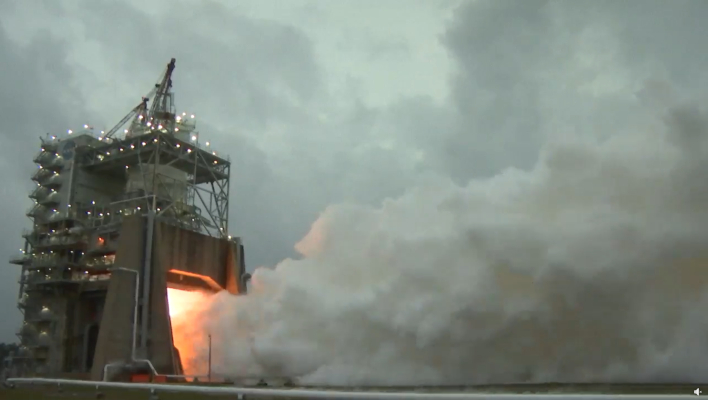Watch NASA's Redesigned Moon Rocket Engine Spew Fire In Aborted Test Run
The Artemis program had a successful first flight around the Moon, before returning back to Earth a little over a week ago. While Artemis I was an unmanned flight, future flights will include astronauts who will put boots back on the surface of the Moon, and eventually include missions to Mars. With that in mind, NASA is already working on improving the RS-25 engine that helps power the massive SLS rocket. The space agency performed a hot test on the newer engine, which was aborted 209.5 seconds into the test. Click on the image below to view the entire test of the RS-25 engine.
"Much like launch, test campaigns are dynamic events that allow us to learn more about the SLS rocket hardware," remarked Johnny Heflin, liquid engines manager for Space Launch Systems at NASA's Marshall Space Flight Center in Huntsville, Alabama. "NASA and Aerojet Rocketdyne teams were successful in running the first test of the new RS-25 restart engine for 209.5 seconds that will help power future missions with the SLS rocket. Preliminary data includes the engine was performing nominally. Data analysis is underway."
The hot fire test, known as a confidence test, is used to confirm that everything is ready to go, before proceeding with a series of certification tests early next year on a full RS-25 certification engine. A total of 16 engines remaining after the Space Shuttle Program for use on Artemis mission I through IV have been modified. The new engines are not scheduled to be used until Artemis V, which gives NASA plenty of time for testing.
"Each test, even one that does not go full duration, helps us gather valuable data and helps us prepare to fly safely," stated Chip Ellis, Stennis RS-25 project manager.

The new engines will include a new powerhead component, a new nozzle, and controller, as well as additional components. The Artemis program is slated to put the first woman and first person of color on the surface of the Moon, as well as future missions that will provide for a long-term presence on the lunar surface, and eventually to Mars.


